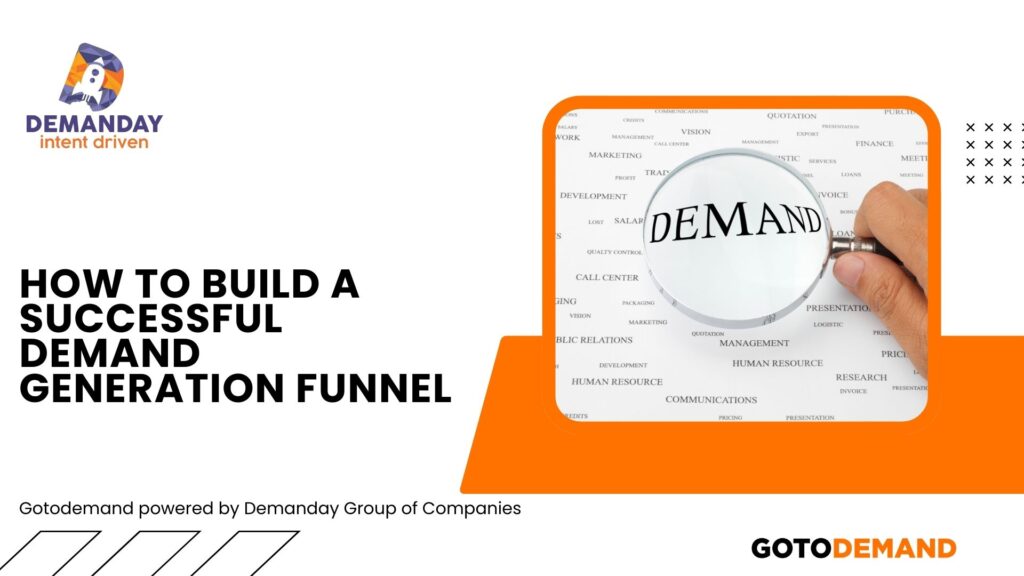The main objective of a marketing plan is to smooth out the buyer’s journey and the demand generation funnel. But what is demand generation, and how do you build a funnel that converts the most prospects into paying customers? So, in this article, we’ll go over all of these principles in detail. Then keep up!
What is Demand Generation?
Demand generation creates awareness and interest in your products or services to nurture leads through the sales funnel. Unlike traditional marketing, which often focuses solely on selling, demand generation emphasizes building relationships with potential customers through valuable content, experiences, and engagement strategies.
Why is a Demand Generation Funnel Important?
A demand generation funnel is an organized technique that guides prospects from awareness to purchase.
- Efficient Lead Nurturing: Helps in nurturing leads at different stages by providing relevant content.
- Improve ROI: According to HubSpot, firms with linked sales and marketing teams have 36% higher customer retention rates.
- Data-Driven Insights: A funnel approach allows tracking and analyzing customer behaviors, and optimizing strategies based on real data.
Building a Successful Demand Generation Funnel
1. Understand Your Target Audience
Understanding your target audience is the first step in building a successful demand generation funnel. Create detailed buyer personas, including demographics, behaviors, pain points, and motivations. Recent studies show that businesses that use buyer personas achieve a 73% increase in lead conversion rates.
Example: If you’re selling software for project management, define your personas as project managers, team leads, or even C-level executives who need to improve productivity.
2. Create Awareness Stage Content
At the top of your funnel, focus on creating awareness among potential customers. This is where you need to capture their attention and educate them about their problems or needs.
Content Ideas for Awareness Stage:
- Blog Posts: Create informative articles that solve common problems your audience faces.
- Social Media Campaigns: Use targeted ads to increase visibility and drive traffic to your resources.
- Host free webinars on relevant industry topics to demonstrate expertise and engage potential leads.
Example: A financial planning company could create an informative blog post on “Top 10 Retirement Planning Mistakes” to attract prospective clients searching for retirement solutions.
3. Engagement Through Consideration Stage
Once you’ve attracted potential customers, the next step is to engage them by providing valuable content that positions your brand as a trustworthy resource.
Content Ideas for Consideration Stage:
- E-books and whitepapers: Provide detailed resources in exchange for contact information.
- Case Studies: Showcase real-life success stories that highlight your products’ benefits.
- Email Marketing: Send targeted content to nurture leads and keep your brand top-of-mind.
Example: If someone downloads your e-book about retirement planning, follow up with a case study highlighting how your services helped a client achieve their retirement goals.
4. Decision Stage: Conversion Strategies
At this stage, your leads are ready for a decision. Focus on providing them with the final push they need to convert into customers.
Strategies for the Decision Stage:
- Free trials or demos: Allow potential buyers to try your goods firsthand.
- Product Comparisons: Provide comparisons with competitors to highlight your unique value proposition.
- Testimonials and Reviews: Use social proof to alleviate any doubts potential customers may have.
Example: A SaaS company can offer a 30-day free trial of their product, ensuring that users experience its value before committing to a purchase.
5. Nurturing Post-Purchase
The funnel doesn’t end at conversion. Nurturing your new customers post-purchase is crucial for retention and advocacy.
Post-Purchase Strategies:
- Onboarding: Provide extensive onboarding to guarantee that clients learn how to utilize your product efficiently.
- Feedback Loops: Regularly solicit feedback to understand customer satisfaction and continuously improve your offerings.
- Loyalty Programs: Create programs that reward returning customers with discounts or exclusive content.
Example: An e-commerce store might send personalized follow-up emails after a purchase, offering complementary products or discounts on future orders.
Measuring the Effectiveness of Your Demand Generation Funnel
To ensure your demand generation funnel is effective, set measurable goals and KPIs, such as:
- Lead Conversion Rates: Track how many leads move to the next stage of your funnel.
- Customer Acquisition Cost (CAC): Calculate the cost associated with acquiring new customers.
- Engagement Metrics: Monitor engagement rates on emails, social media, and content downloads.
Recent Data Insight: According to Demand Metric, 67% of marketers say that increasing lead quality has become more important in 2023. This highlights the need for refining your demand generation funnel based on performance data.
Conclusion
Building a demand generation funnel that works requires a strategic approach to understanding your audience’s journey. By creating targeted content at each stage of the funnel and continuously optimizing based on performance data, you can effectively generate demand and convert leads into loyal customers.
Start by analyzing your target audience today, and begin implementing the techniques outlined in this article to create a robust demand generation funnel that drives results. If you need assistance diving deeper into any of these strategies, feel free to reach out!

